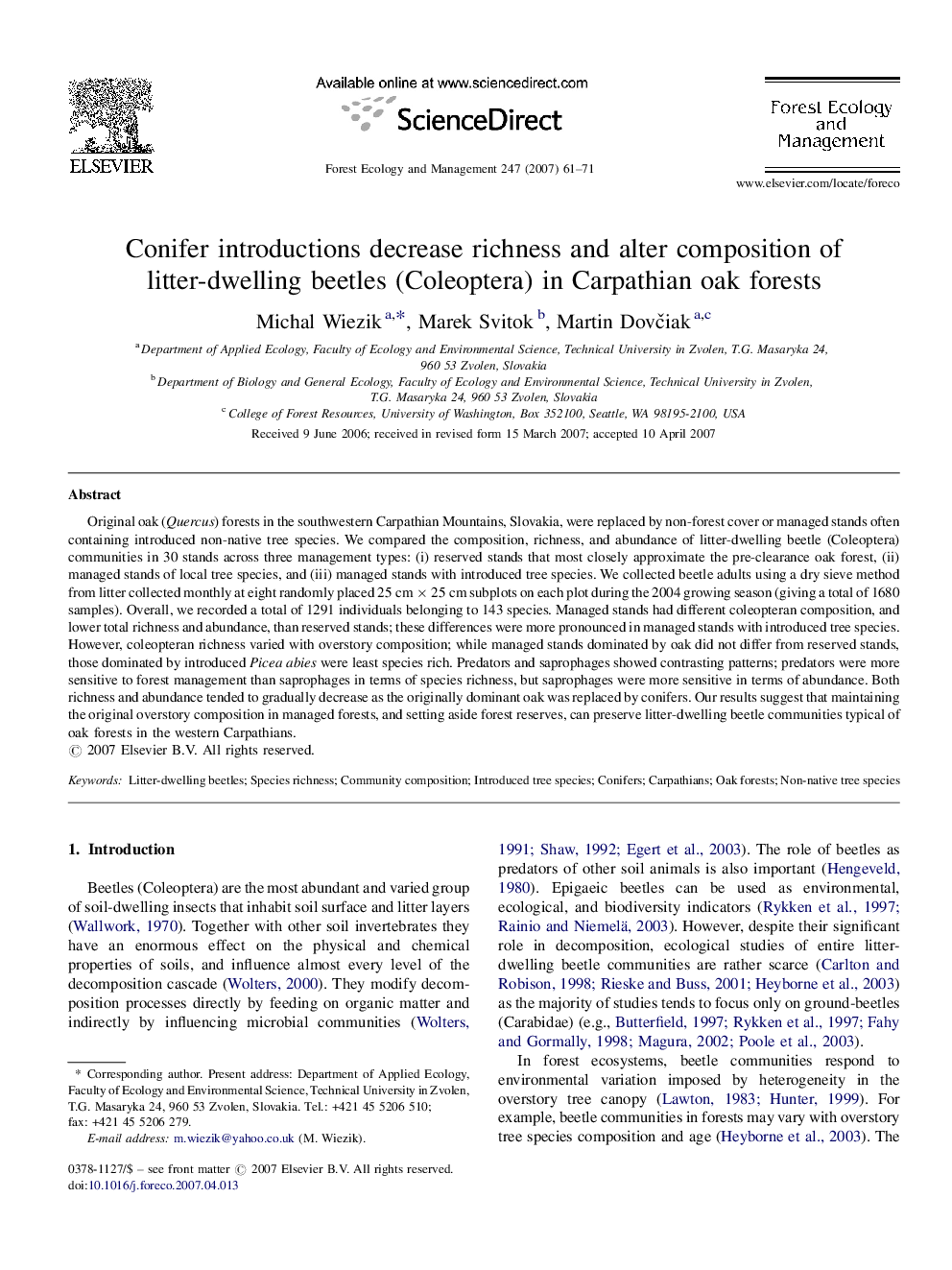| Article ID | Journal | Published Year | Pages | File Type |
|---|---|---|---|---|
| 90390 | Forest Ecology and Management | 2007 | 11 Pages |
Original oak (Quercus) forests in the southwestern Carpathian Mountains, Slovakia, were replaced by non-forest cover or managed stands often containing introduced non-native tree species. We compared the composition, richness, and abundance of litter-dwelling beetle (Coleoptera) communities in 30 stands across three management types: (i) reserved stands that most closely approximate the pre-clearance oak forest, (ii) managed stands of local tree species, and (iii) managed stands with introduced tree species. We collected beetle adults using a dry sieve method from litter collected monthly at eight randomly placed 25 cm × 25 cm subplots on each plot during the 2004 growing season (giving a total of 1680 samples). Overall, we recorded a total of 1291 individuals belonging to 143 species. Managed stands had different coleopteran composition, and lower total richness and abundance, than reserved stands; these differences were more pronounced in managed stands with introduced tree species. However, coleopteran richness varied with overstory composition; while managed stands dominated by oak did not differ from reserved stands, those dominated by introduced Picea abies were least species rich. Predators and saprophages showed contrasting patterns; predators were more sensitive to forest management than saprophages in terms of species richness, but saprophages were more sensitive in terms of abundance. Both richness and abundance tended to gradually decrease as the originally dominant oak was replaced by conifers. Our results suggest that maintaining the original overstory composition in managed forests, and setting aside forest reserves, can preserve litter-dwelling beetle communities typical of oak forests in the western Carpathians.
